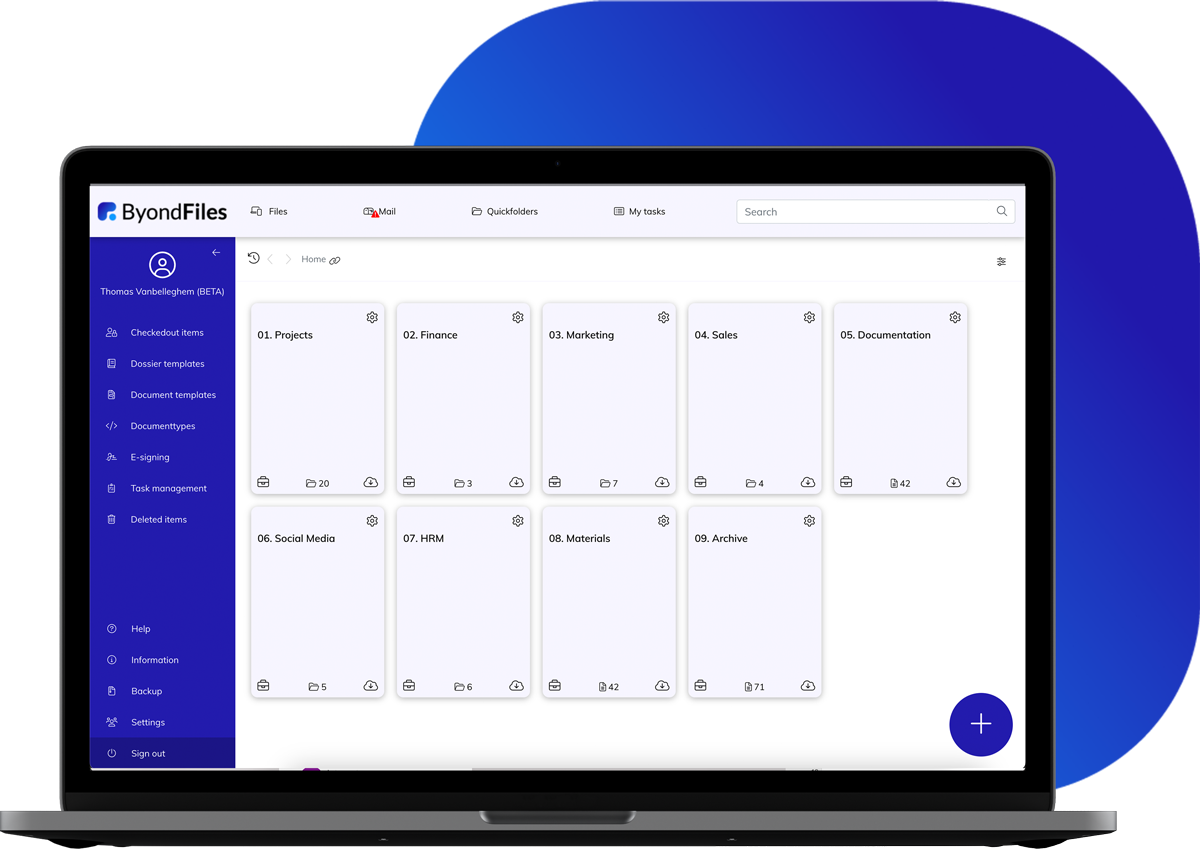Reducing Errors by Implementing a "Single Source of Truth"
In the construction and installation sectors, errors are often costly and time-consuming. Studies show that 30% of construction costs worldwide are due to inefficiencies, including miscommunication, errors from using outdated documents, and poor data management. Issues such as duplicate data entry and different versions of the same document can lead to delays, extra costs, and even legal complications.
A solution that more companies in these sectors are adopting is implementing a “single source of truth” (SSOT). What does this mean exactly, and how can it help construction and installation companies work more efficiently and accurately?

What is a Single Source of Truth and Why is it Important?
An SSOT refers to a centralized system where all relevant data and documents are stored, updated, and shared. This system acts as the only reliable source of information within an organization. As a result, everyone involved — from project managers and designers to construction workers and installers — works with the same, up-to-date data, preventing inconsistencies.
In practice, a SSOT for a construction or installation company can include digital construction drawings, contracts, work orders, safety instructions, and other crucial documents needed for a project to run smoothly. An example is the platform ByondFiles, specifically designed for the construction sector, offering features such as version control and integration with construction software like common ERPs and CRM tools.
Challenges of Traditional Document Management Processes
Without a SSOT, projects are often managed through a mix of paper documents, emails, Excel sheets, and shared drives. This traditional approach brings several problems:
-
Version Conflicts
A contractor uses a construction drawing that has been revised by an architect, but the construction team works with an older version. This can lead to on-site errors, such as incorrectly placed pipes.
Impact: Fixing such errors can represent 5-10% of the total project costs. -
Lack of Transparency
Employees often don't know which version of a document is current, causing confusion. This issue was highlighted in a McKinsey report, which found that 48% of time in construction is lost to non-productive activities, including searching for documents. -
Loss of Time
Without a central system, a lot of time is wasted searching for information or correcting errors. Imagine a project manager spending an hour trying to find a specific work order — multiply that by an entire team, and the costs quickly add up. -
Compliance Risks
Poor or incorrect document management can lead to non-compliance with laws and regulations. This can result in fines or legal disputes, such as the use of unsafe materials because an update in safety regulations was not shared.

Standard Solutions vs. Custom Solutions: What Works Better?
When implementing a SSOT, companies have the choice between standard software and custom solutions.
Standard Solutions
These solutions are specifically designed for the sector and are ready to use immediately.
These solutions are specifically designed for the sector and are ready to use immediately.
Advantages:
-
Affordable
Development costs are shared among multiple users, making them more accessible. -
Quick Deployment
Software is usually available immediately, limiting implementation time. -
Sector-specific Features
For example, ByondFiles offers tools for version control and real-time access to construction drawings via mobile apps.
Disadvantages:
-
Limited Customization
They may not offer the same level of flexibility as custom solutions. -
Compatibility
Can present challenges when integrating with older systems.
Custom Solutions
Custom software is fully tailored to the unique needs of a company.
Custom software is fully tailored to the unique needs of a company.
Advantages:
-
Fully Customized
Ideal for companies with very specific workflows. -
Integration
Often offers seamless integration with existing systems.
Disadvantages:
-
Cost
Development and maintenance are expensive, with initial costs often reaching tens of thousands of euros. -
Longer Implementation Time
Development and testing can take months or years. -
Dependency
Companies become dependent on external developers.
For most companies in the construction and installation sectors, a standard solution like ByondFiles is often a more cost-effective choice.
How to Start with a SSOT?
Implementing a SSOT doesn't have to be overwhelming. A step-by-step approach helps:
-
Analyze Your Current Workflow
Identify where errors occur and where inefficiencies lie. For example, which documents are most often misused? -
Select the Right Solution
Look for software that fits the scale and complexity of your projects. For instance, ByondFiles for construction-specific document management. -
Involve All Stakeholders
Ensure everyone understands why a SSOT is important. Workshops or internal training can help with this. -
Provide Training
Invest in training to familiarize staff with the new tools. -
Monitor and Improve
Regularly check the SSOT's performance and make adjustments as needed.

Conclusion
Implementing a "single source of truth" can offer significant advantages for construction and installation companies. Reducing errors and improving collaboration not only lowers costs but also enhances customer satisfaction.
In an industry where margins are small and time pressure is high, a SSOT is not a luxury but a necessity. By using proven solutions, you can execute projects more efficiently and accurately. Leave traditional practices behind and choose a future where one truth applies to everyone.
Curious about what a SSOT can mean for your company? Contact us for a no-obligation demo of ByondFiles.